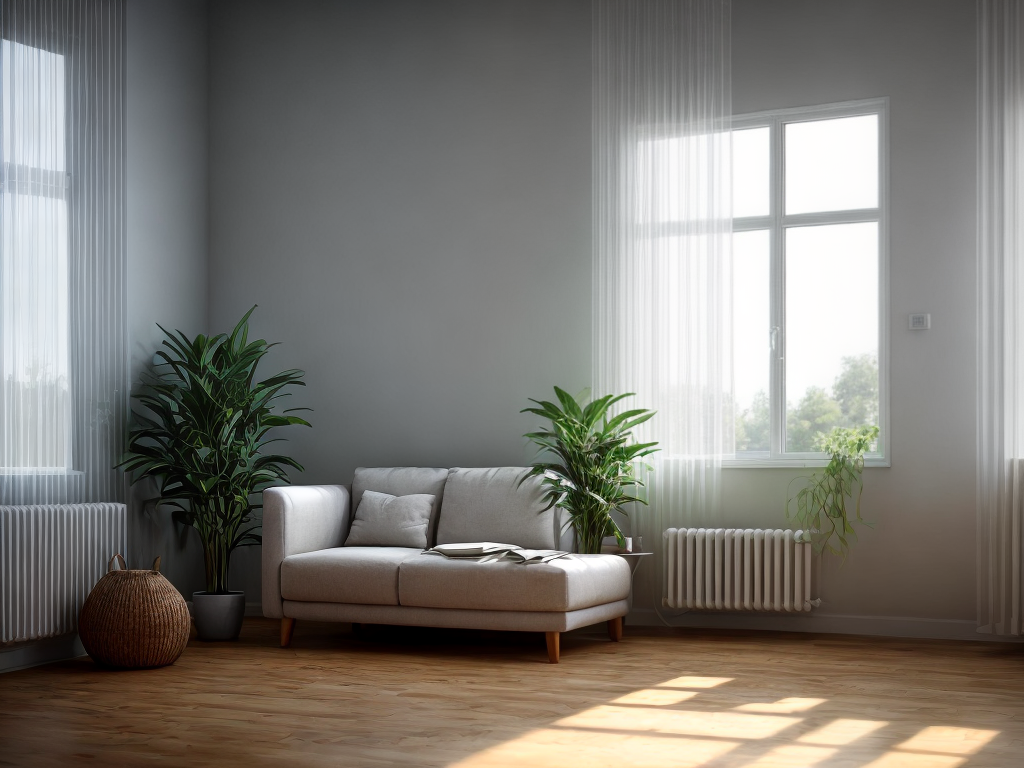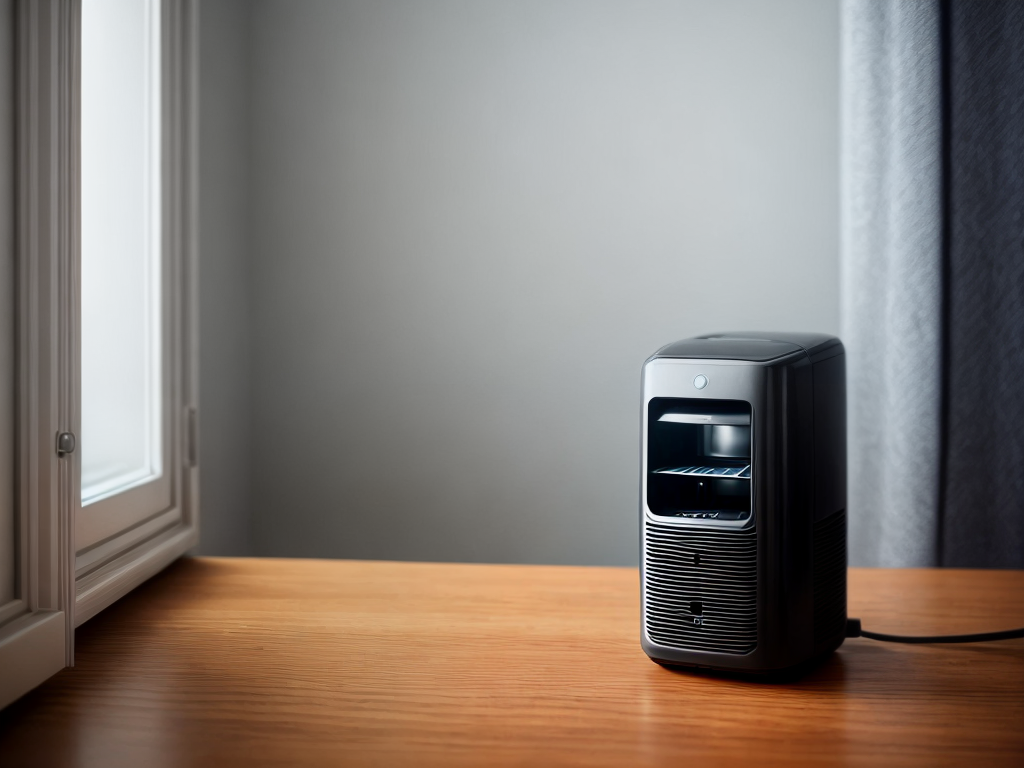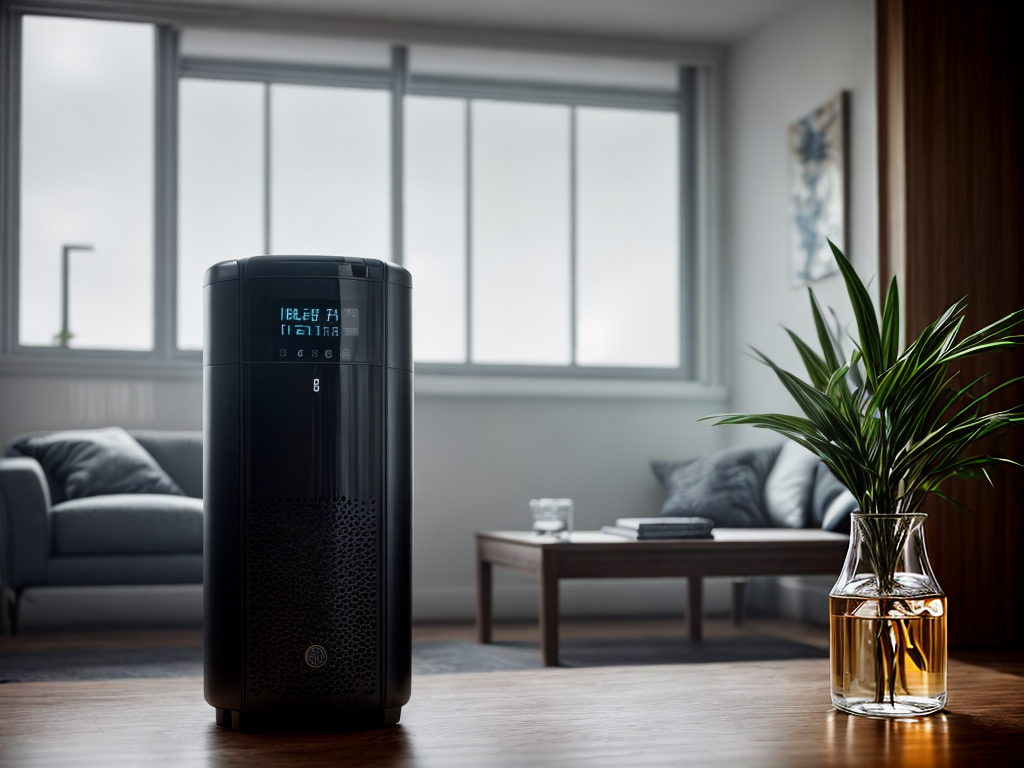
Have you ever wondered how dehumidifiers work and what benefits they offer? If so, you’re in the right place. In this discussion, I will address the top 10 frequently asked questions about dehumidifiers, providing you with the answers you need to make informed decisions for your home. From understanding the ideal humidity level to choosing the right size dehumidifier, and even exploring how these devices can help with allergies and asthma, we’ll cover it all. So, let’s dive in and uncover the answers to these common questions together.
How Do Dehumidifiers Work?
Dehumidifiers work by removing excess moisture from the air. They are an essential appliance for maintaining a controlled environment in your home. To ensure the optimal performance of your dehumidifier, regular maintenance is crucial. Here are some dehumidifier maintenance tips to keep in mind.
Firstly, it is important to clean the filter regularly. A dirty filter can hinder the dehumidifier’s ability to effectively remove moisture from the air. Simply remove the filter and clean it with mild soap and water. Be sure to dry it thoroughly before reinserting it into the dehumidifier.
Secondly, check the drainage system. Many dehumidifiers have a built-in water tank or a drainage hose. Make sure the water tank is empty and the drainage hose is properly connected. If the water tank is full, the dehumidifier may stop working or overflow, causing damage to the unit and your home.
Lastly, be aware of common dehumidifier problems. These may include issues such as excessive noise, ice buildup on the coils, or a malfunctioning humidity sensor. If you encounter any of these problems, refer to the manufacturer’s manual for troubleshooting steps or contact a professional for assistance.
What Is the Ideal Humidity Level for a Home?
So, what is the ideal humidity level for a home? Maintaining optimal home humidity levels is crucial for both comfort and health. Experts recommend keeping indoor humidity between 30% and 50% for the best living environment.
Optimal Home Humidity Levels
Maintaining the ideal humidity level for a home is crucial for creating a comfortable and healthy living environment. Here are three important points to consider when it comes to optimal home humidity levels:
-
Effects of high humidity: High humidity can lead to a range of issues such as mold growth, musty odors, and damage to furniture and electronics. It can also make the air feel heavy and uncomfortable, causing difficulty in breathing and exacerbating respiratory conditions.
-
Impact of low humidity on health: On the other hand, low humidity can cause dry skin, irritated eyes, and respiratory problems. It can also lead to static electricity and damage wooden furniture and flooring. Additionally, low humidity can make the air feel colder, leading to increased energy consumption for heating.
Recommended Indoor Humidity
High humidity levels can lead to a range of issues, but what is the ideal humidity level for a home? The recommended indoor humidity level for a home is typically between 30% and 50%. This range helps to create a comfortable and healthy living environment. High humidity can promote the growth of mold, mildew, and dust mites, which can trigger allergies and respiratory problems. On the other hand, low humidity can cause dry skin, irritated eyes, and even damage to wooden furniture and floors. To maintain the recommended indoor humidity level, dehumidifiers can be used. These devices work by removing excess moisture from the air, reducing humidity and preventing the growth of mold and other allergens. Dehumidifiers are a great tool to help control and maintain the ideal humidity level in your home.
What Are the Benefits of Using a Dehumidifier?
Using a dehumidifier has several benefits. First, it improves air quality by reducing excess moisture in the air, which can lead to mold growth and allergens. Second, it helps prevent the growth of mold and mildew, which can cause damage to your home and pose health risks. Lastly, it reduces musty odors, making your home a more pleasant environment to live in.
Improved Air Quality
By utilizing a dehumidifier, I can effectively improve the air quality in my home. Excess humidity can lead to a variety of issues, such as mold growth, musty odors, and respiratory problems. Here are three reasons why using a dehumidifier can help improve air quality:
-
Eliminates excess moisture: A dehumidifier helps to remove excess moisture from the air, preventing the growth of mold and mildew. This reduces the risk of respiratory issues and allergies caused by airborne allergens.
-
Reduces musty odors: Excess humidity can cause a musty smell in your home. By controlling the humidity levels, a dehumidifier helps to eliminate these unpleasant odors, leaving your home smelling fresh and clean.
-
Prevents dust mites: Dust mites thrive in humid environments. By maintaining optimal humidity levels, a dehumidifier can help to reduce the presence of dust mites, alleviating symptoms for those with allergies or asthma.
With a dehumidifier, I have control over the humidity levels in my home, leading to improved air quality and a healthier living environment.
Prevents Mold Growth
Controlling humidity levels with a dehumidifier effectively prevents the growth of mold in my home. Mold thrives in damp and humid environments, making it essential to maintain proper humidity control. By reducing excess moisture in the air, a dehumidifier helps create an environment that is inhospitable to mold growth. Mold spores can cause various health issues, including allergies, respiratory problems, and even asthma. Preventing mold growth through the use of a dehumidifier not only safeguards my health but also protects my home from potential damage. By actively removing moisture from the air, a dehumidifier helps prevent condensation on windows and walls, reducing the risk of mold growth and ensuring a healthier and more comfortable living space.
Reduces Musty Odors
Maintaining proper humidity levels with a dehumidifier helps reduce musty odors in my home. Here are three ways in which a dehumidifier can make a significant impact on indoor allergies and improve the overall air quality in my living space:
-
Eliminates excess moisture: A dehumidifier removes excess moisture from the air, preventing the growth of mold and mildew. By reducing the moisture levels, it helps to eliminate the musty odors that often accompany these allergens.
-
Controls allergens: Dust mites and mold thrive in humid environments, triggering allergic reactions in sensitive individuals. By reducing the humidity, a dehumidifier helps to control these allergens and minimize the symptoms associated with indoor allergies.
-
Improves air quality: By reducing the moisture and controlling allergens, a dehumidifier helps to improve the overall air quality in my home. It creates a healthier living environment, free from musty odors and potential allergens that can impact indoor allergies.
How Do I Choose the Right Size Dehumidifier for My Space?
To choose the right size dehumidifier for my space, I assess the square footage and moisture level in the area. It’s important to find a dehumidifier that can effectively remove excess moisture without being too large or too small for the space. Here are some dehumidifier sizing options to consider:
| Square Footage | Moisture Level | Recommended Dehumidifier Size |
|---|---|---|
| Small (up to 500 sq. ft.) | Low moisture level | 30-40 pint dehumidifier |
| Medium (500-1,000 sq. ft.) | Moderate moisture level | 40-50 pint dehumidifier |
| Large (1,000-2,000 sq. ft.) | High moisture level | 50-70 pint dehumidifier |
| Extra Large (2,000+ sq. ft.) | Very high moisture level | 70+ pint dehumidifier |
By considering both the square footage and moisture level, I can determine the appropriate size dehumidifier for my space. It’s important to note that if the moisture level in the area is consistently high or there are specific moisture issues such as excessive condensation or mold growth, it’s recommended to choose a dehumidifier on the higher end of the recommended size range.
Choosing the right size dehumidifier ensures optimal performance and efficient moisture removal, giving me control over the humidity levels in my space.
Can a Dehumidifier Help With Allergies or Asthma?
I’ve always wondered if a dehumidifier could help with my allergies or asthma. Can it really make a difference? I’m curious to know if there’s any scientific evidence to support the claims.
Allergies and Dehumidifiers
Using a dehumidifier can be beneficial for individuals with allergies or asthma. Here are three reasons why:
-
Reduced allergens: Dehumidifiers help to lower humidity levels in the air, making it less favorable for allergens such as dust mites, mold, and mildew to thrive. By creating a drier environment, dehumidifiers can minimize the presence of these allergens, reducing the risk of triggering allergies or asthma attacks.
-
Improved air quality: High humidity can contribute to poor air quality, leading to respiratory issues for those with allergies or asthma. Dehumidifiers work by removing excess moisture from the air, effectively purifying it and creating a healthier indoor environment. This can help individuals breathe easier and alleviate symptoms associated with allergies or asthma.
-
Prevention of mold growth: Mold thrives in damp environments, and exposure to mold can worsen allergies or asthma symptoms. Dehumidifiers can prevent mold growth by controlling moisture levels and reducing the humidity that mold needs to flourish. By keeping humidity in check, dehumidifiers can help individuals with allergies or asthma maintain a mold-free living space.
Asthma and Dehumidifiers
With its ability to reduce allergens and improve air quality, a dehumidifier can also provide relief for individuals suffering from asthma. Asthma is a chronic respiratory condition that causes inflammation and narrowing of the airways, leading to difficulty breathing. High humidity levels can exacerbate asthma symptoms, as it promotes the growth of mold, dust mites, and other allergens. By reducing moisture in the air, a dehumidifier helps create an environment that is less favorable for the growth of these triggers. This can result in a decrease in asthma symptoms and improved overall lung function. Additionally, dehumidifiers can help prevent the spread of respiratory infections, as viruses and bacteria thrive in moist environments. Consider the following benefits of using a dehumidifier in asthma management:
| Benefit | Explanation |
|---|---|
| Reduces Allergens | Decreases dust mites, mold, and other allergens that can trigger asthma. |
| Improves Air Quality | Filters out pollutants and irritants, providing cleaner air to breathe. |
| Prevents Respiratory Infections | Reduces moisture levels that promote the growth of viruses and bacteria. |
Using a dehumidifier in conjunction with other asthma management strategies, such as medication and regular cleaning, can greatly improve the quality of life for individuals with asthma.
How Often Should I Run My Dehumidifier?
To ensure optimal performance, it is important to determine the appropriate frequency for running your dehumidifier. Here are three key points to consider when deciding how often to run your dehumidifier:
-
Ideal Dehumidifier Settings: It is recommended to set your dehumidifier to maintain a humidity level between 30% and 50%. This range helps prevent mold growth, dust mite proliferation, and other moisture-related issues. Regularly monitoring and adjusting the settings based on the humidity levels in your home will ensure maximum effectiveness.
-
Benefits of Running a Dehumidifier at Night: Running your dehumidifier at night can be beneficial for several reasons. Firstly, it allows you to take advantage of the quieter hours when you’re less likely to be disturbed by the noise it generates. Additionally, running the dehumidifier at night can help keep the humidity levels in check while you sleep, promoting a more comfortable and restful environment.
-
Control and Flexibility: The frequency at which you run your dehumidifier can vary depending on factors such as the current humidity levels, weather conditions, and the size of your space. Having control over when and how often you run your dehumidifier gives you the flexibility to adapt to changing conditions and maintain a healthy indoor environment.
Do Dehumidifiers Consume a Lot of Energy?
Running your dehumidifier regularly is important, but you may be wondering if it consumes a lot of energy. Energy efficiency is a top concern for many homeowners, as it not only impacts their utility bills but also the environmental footprint. Fortunately, modern dehumidifiers are designed to be energy-efficient, allowing you to maintain a comfortable and dry environment without breaking the bank.
To help you better understand the energy consumption of dehumidifiers, I have prepared a table that compares the average energy usage of different dehumidifier capacities. This table provides an estimate of the energy consumption based on the size of the dehumidifier, measured in pints per day. Keep in mind that these values are approximate and may vary depending on the specific model and usage patterns.
| Dehumidifier Capacity (pints/day) | Energy Consumption (watts) | Monthly Energy Cost ($) |
|---|---|---|
| 30 | 300 | $11.70 |
| 50 | 400 | $15.60 |
| 70 | 500 | $19.50 |
| 90 | 600 | $23.40 |
| 110 | 700 | $27.30 |
As you can see, the energy consumption of dehumidifiers varies based on their capacity. Generally, larger dehumidifiers consume more energy than smaller ones. However, it’s important to note that the monthly energy cost remains reasonable, especially when considering the benefits of maintaining a dry and comfortable living space.
How Do I Clean and Maintain My Dehumidifier?
Cleaning and maintaining your dehumidifier is essential to ensure its optimal performance and longevity. Here are some cleaning tips and a maintenance checklist that will help you keep your dehumidifier in top shape:
-
Regularly clean the air filter: The air filter collects dust, debris, and other particles from the air. To clean it, first, turn off and unplug the dehumidifier. Then, remove the filter and gently wash it with warm soapy water. Rinse it thoroughly and let it air dry before reinserting it into the unit.
-
Clean the water collection bucket: Over time, the water collection bucket can develop mold or mildew. To clean it, empty the bucket and wash it with a mixture of warm water and mild detergent. Rinse it thoroughly and let it dry completely before placing it back in the dehumidifier.
-
Check the drainage system: If your dehumidifier has a drainage hose or pump, make sure they are free from clogs or obstructions. Clean them regularly to ensure proper water flow and prevent any potential leaks.
Can a Dehumidifier Prevent Mold and Mildew?
A dehumidifier can effectively prevent the growth of mold and mildew in your home. One of the main benefits of using a dehumidifier is that it helps control the moisture levels in your indoor environment. Mold and mildew thrive in damp areas, so by reducing the humidity, you create an environment that is less conducive for their growth.
Excess moisture in the air can lead to the formation of condensation on walls, windows, and other surfaces. This moisture provides the perfect breeding ground for mold and mildew. By using a dehumidifier, you can remove the excess moisture from the air, preventing the build-up of condensation and reducing the likelihood of mold and mildew growth.
Dehumidifiers are highly effective in preventing mold and mildew, especially in areas with high humidity or poor ventilation. They work by extracting moisture from the air, lowering the humidity levels in your home. By maintaining the ideal humidity level, usually between 30-50%, you create an environment that is inhospitable to mold and mildew.
Are There Any Safety Precautions I Should Take When Using a Dehumidifier?
After understanding how a dehumidifier can prevent mold and mildew, it is important to be aware of the safety precautions that should be taken when using one. To ensure a safe and efficient operation of your dehumidifier, here are three important safety precautions to keep in mind:
-
Proper Placement: Always place your dehumidifier on a level surface and ensure there is at least a foot of clearance around the unit for proper airflow. Avoid placing it near curtains, furniture, or any other flammable materials to reduce the risk of fire hazards.
-
Regular Maintenance: Regularly clean and maintain your dehumidifier according to the manufacturer’s instructions. This includes regularly emptying and cleaning the water tank, replacing filters, and inspecting the power cord for any damage. Neglecting maintenance can lead to reduced efficiency and potential safety hazards.
-
Avoid Overloading: Do not overload the dehumidifier by exceeding its recommended capacity. Overloading can strain the unit and cause it to overheat or malfunction. Be sure to check the manufacturer’s guidelines to determine the appropriate capacity for your specific needs.








